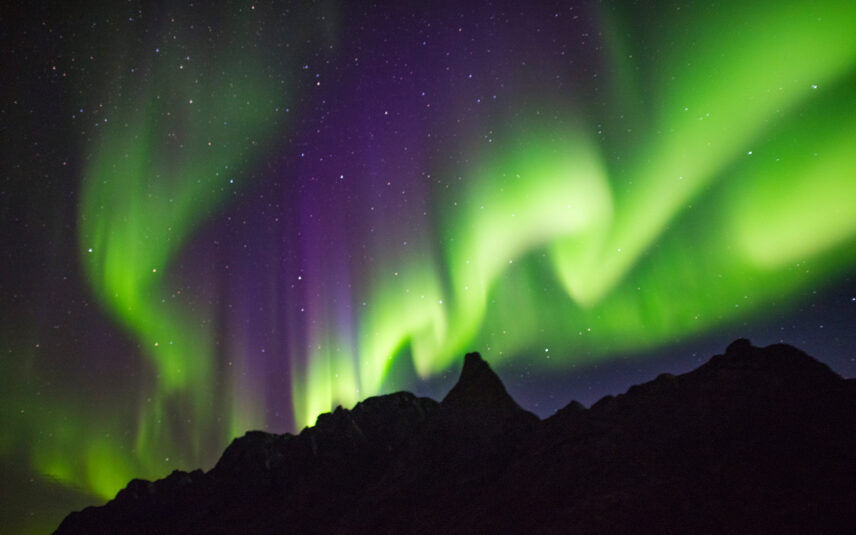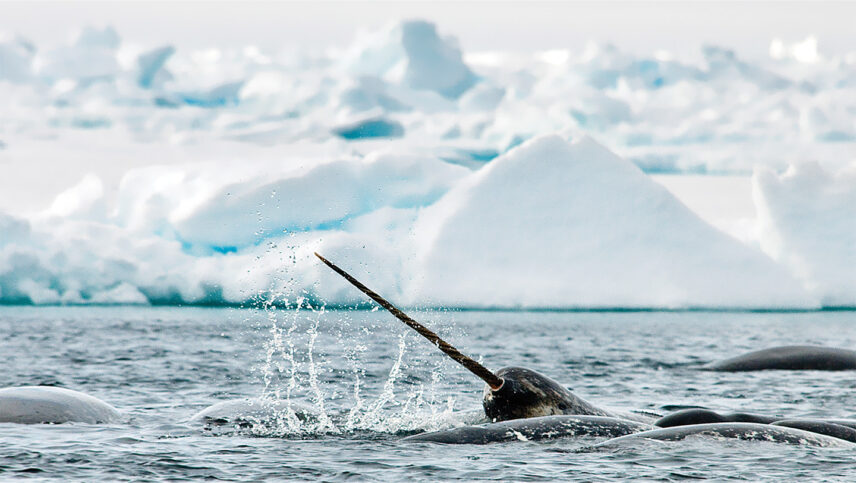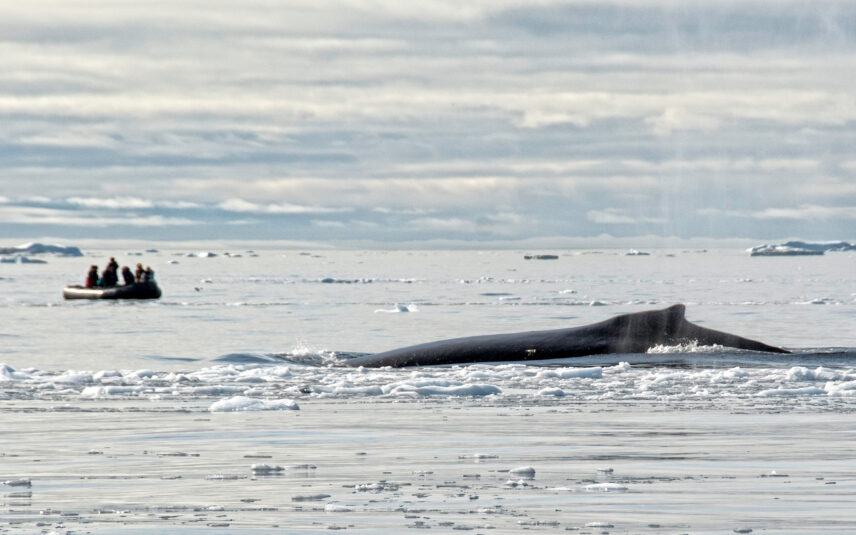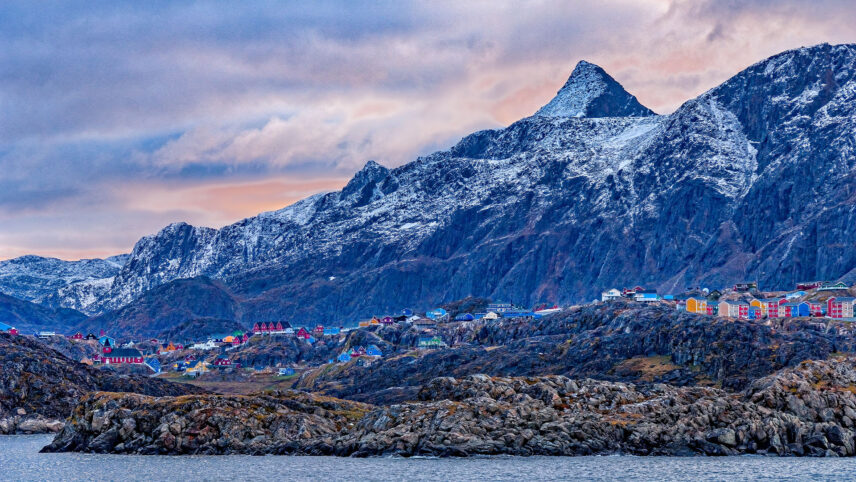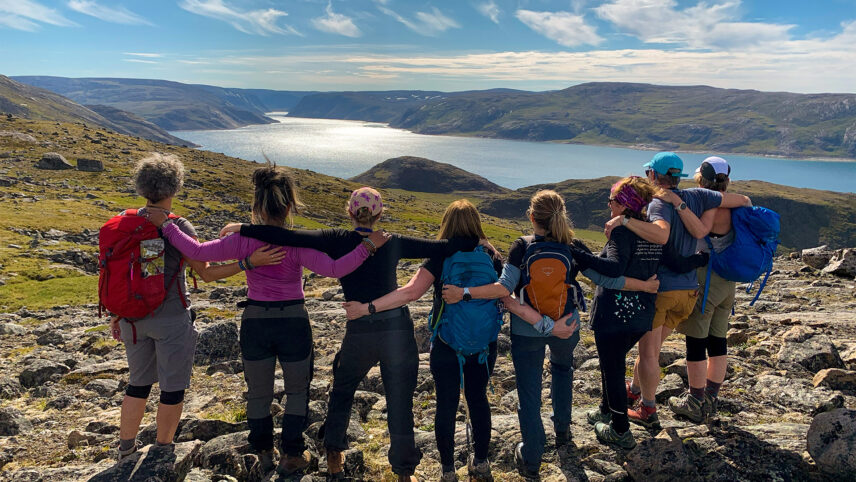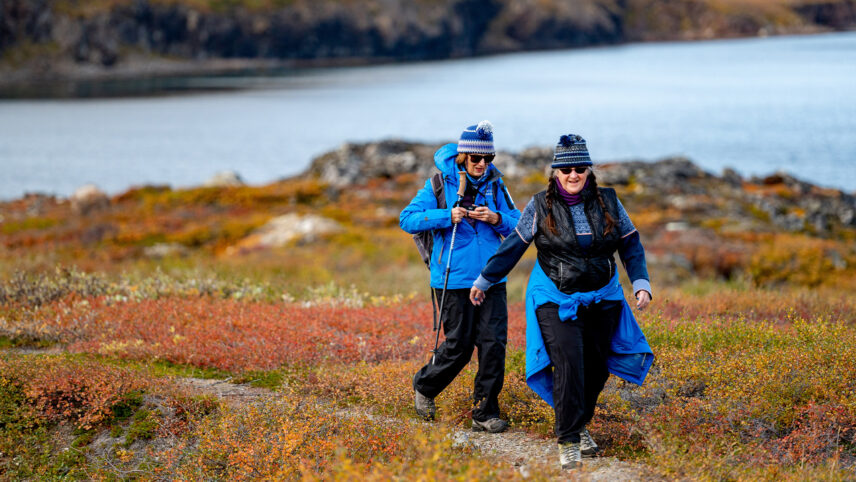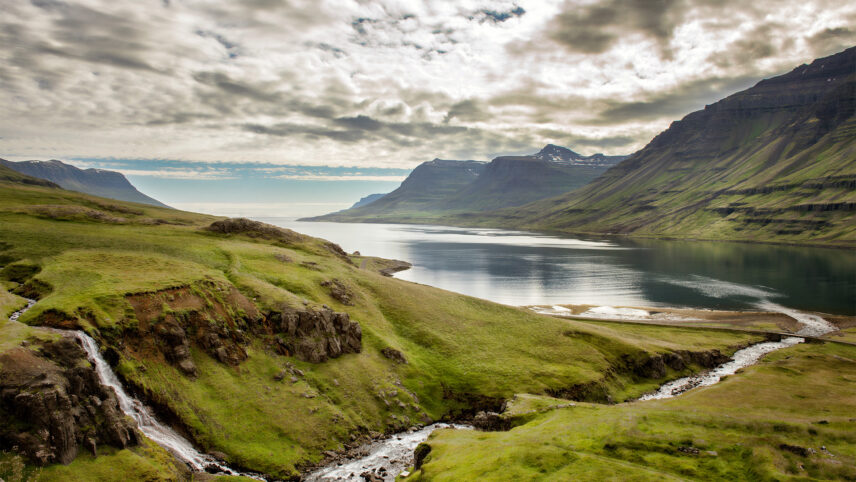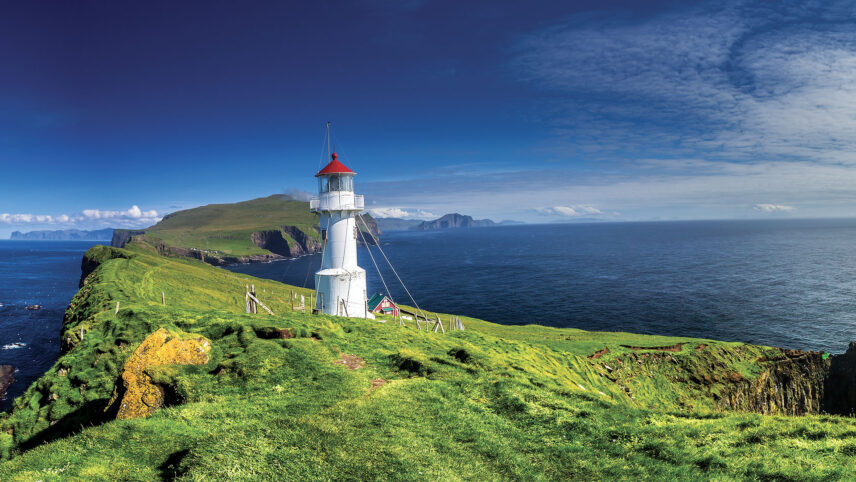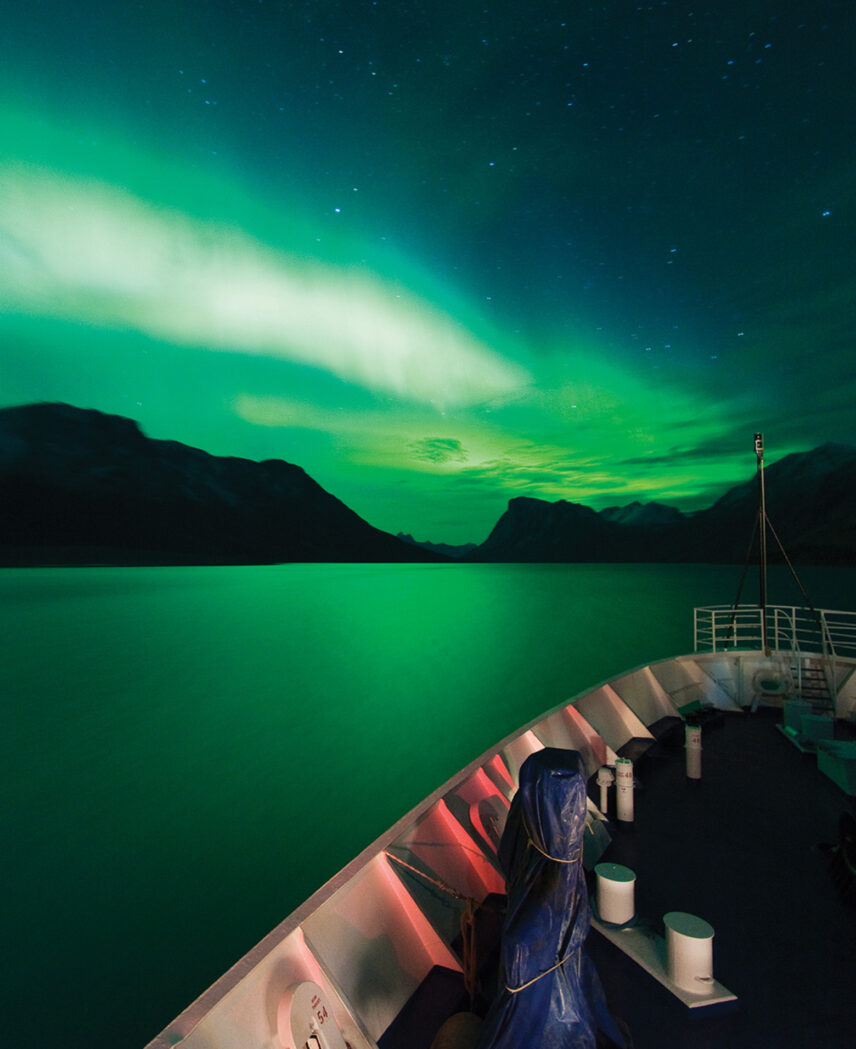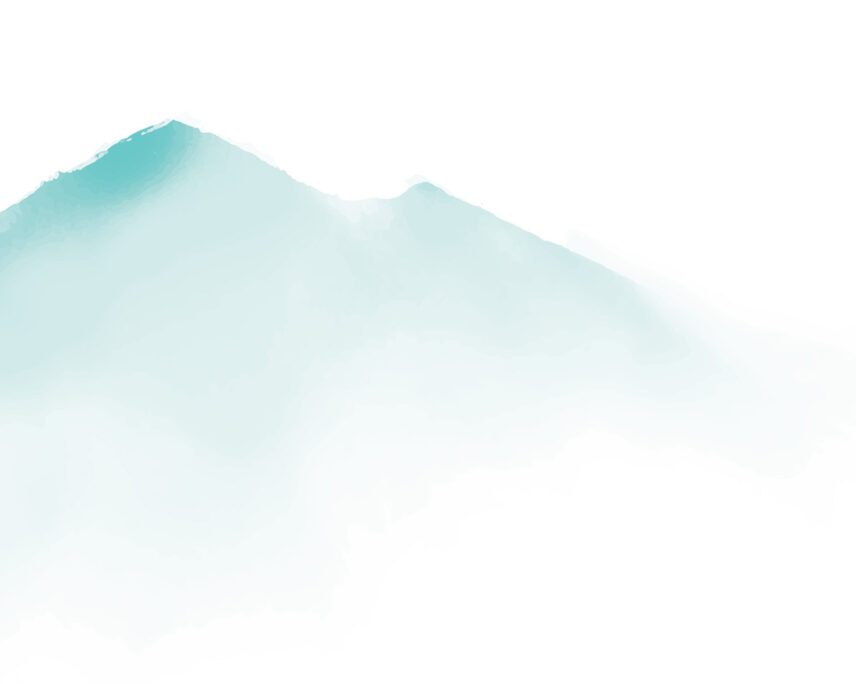
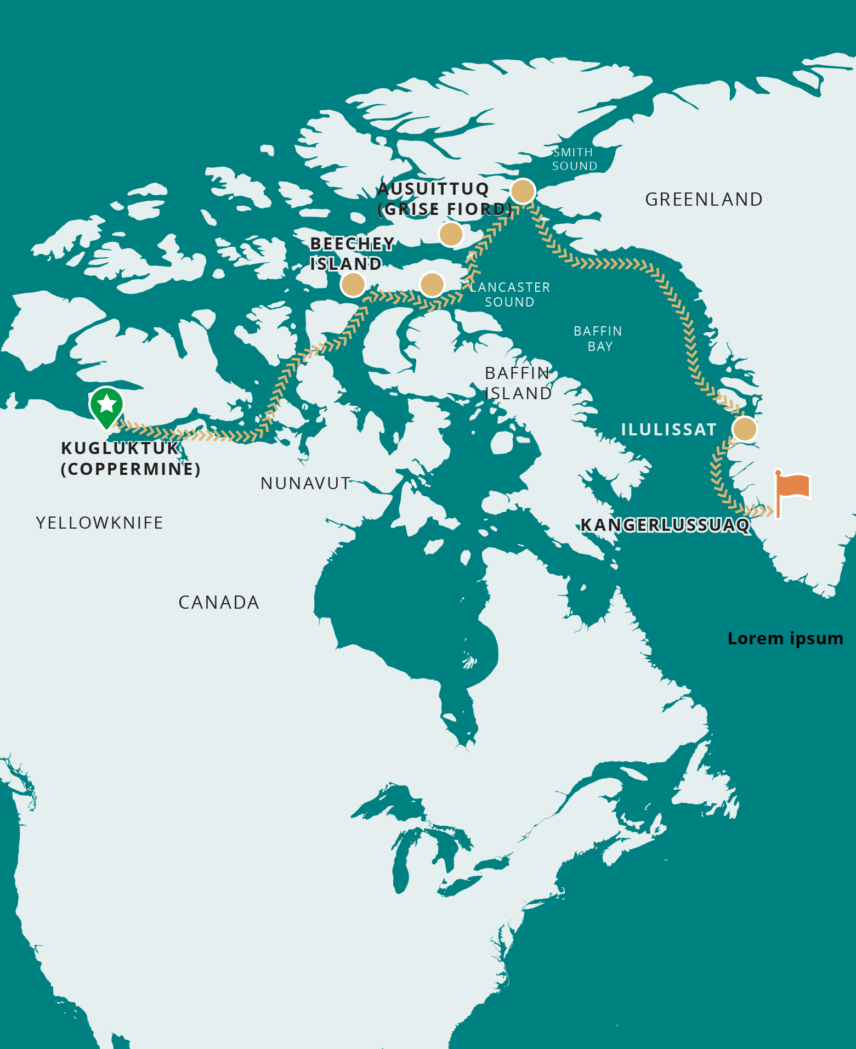
Trip Overview
Departures
Trip Dates + Prices
Duration
17 Days
Activities
Boating/Rafting
Cultural
Hiking
Small-Ship Expedition
Wildlife Viewing
Physical Rating
Easy
Be the First to Know
Interested in this trip? Get on the list for exclusive information and updates.
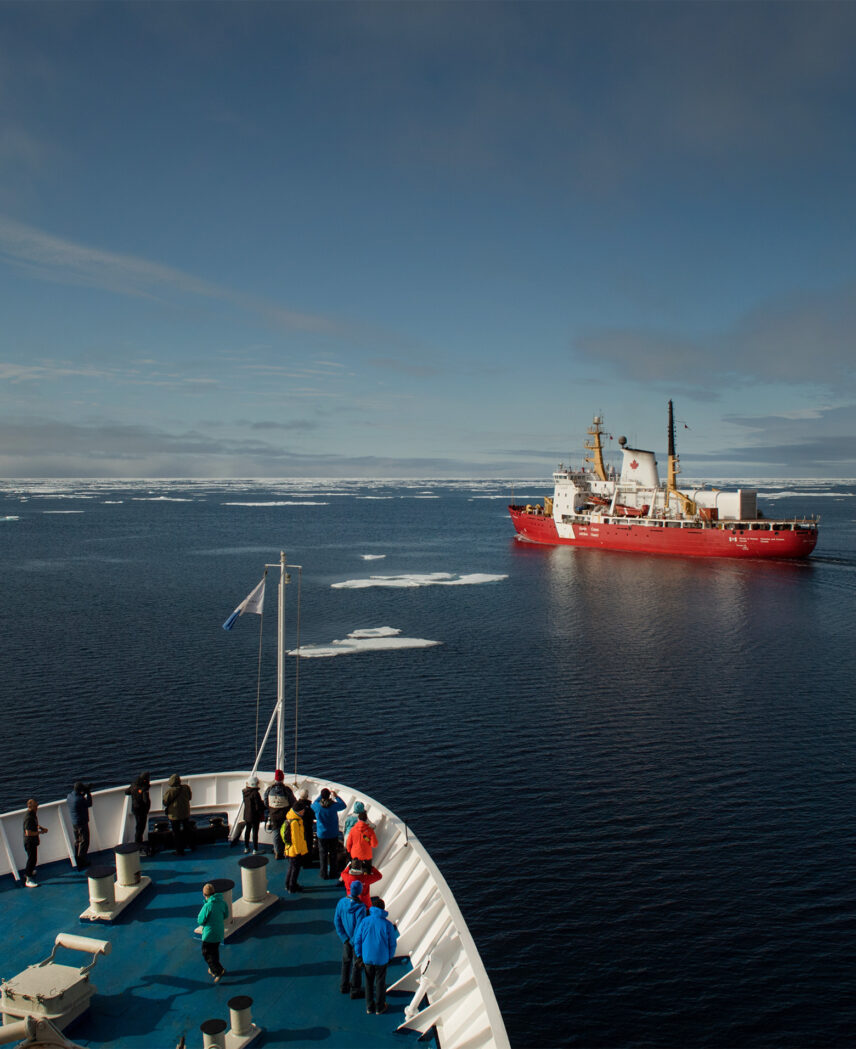
Photo Credit: Michelle Valberg
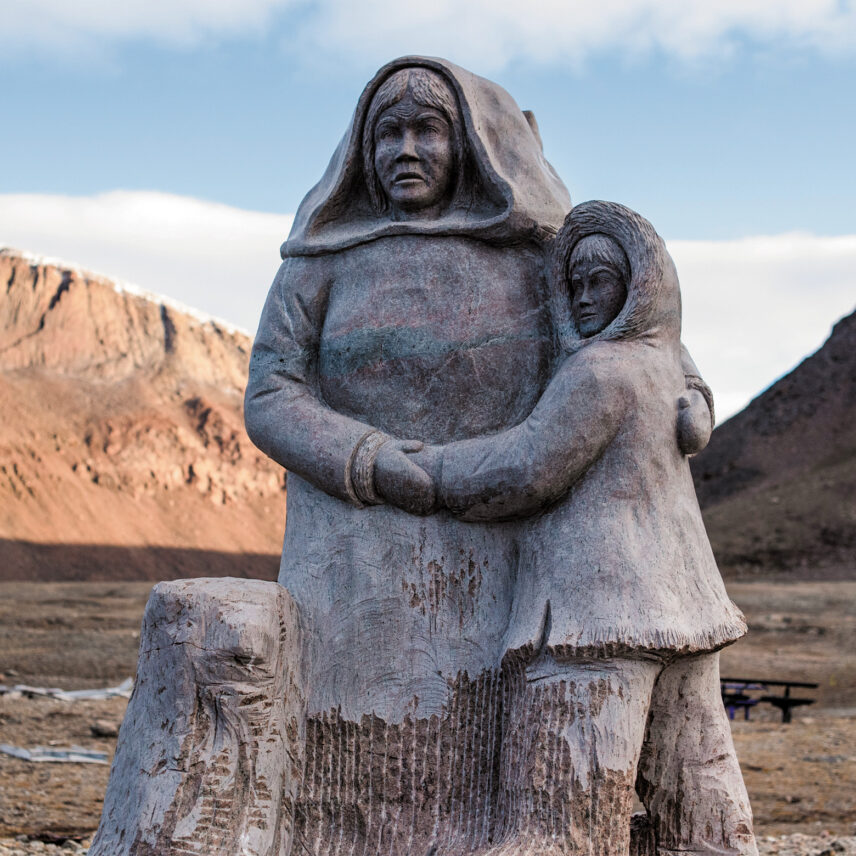
Photo Credit: Victoria J. Polsoni
Follow the Sea Route of Early Arctic Explorers
This unique trip twist on the classic Into the Northwest Passage itinerary offers the opportunity to travel ancient Inuit and explorer routes out of the Northwest Passage via Bellot Strait, Ausuittuq and Smith Sound. The ever-changing landscape of the sea route dramatically shifts from the “place of moving waters” (Kugluktuk) to the “place that never thaws” (Ausuittuq) to “the people living in a place where there are fox dens” (Sisimiut).
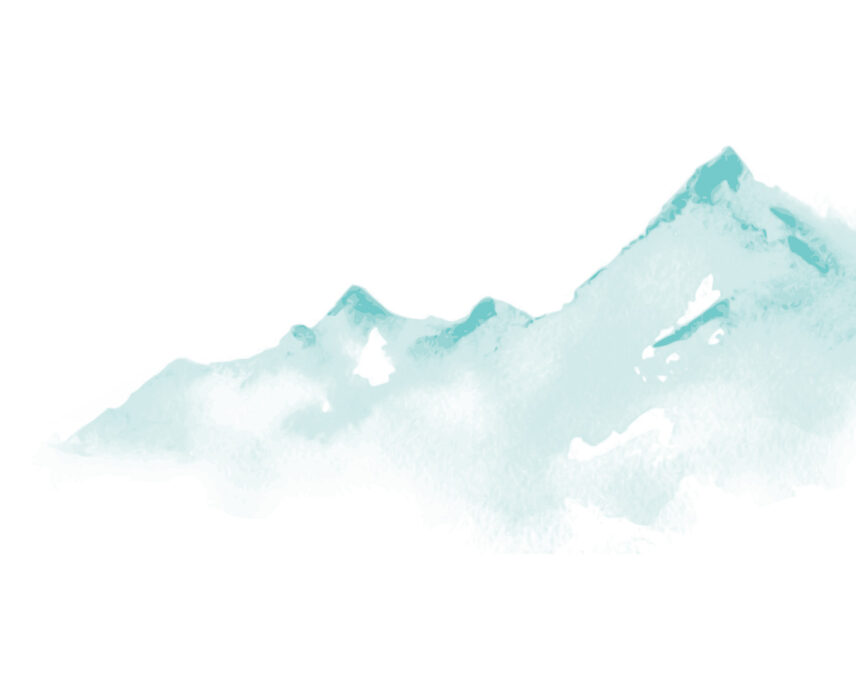
A Historical Unmapped Quest
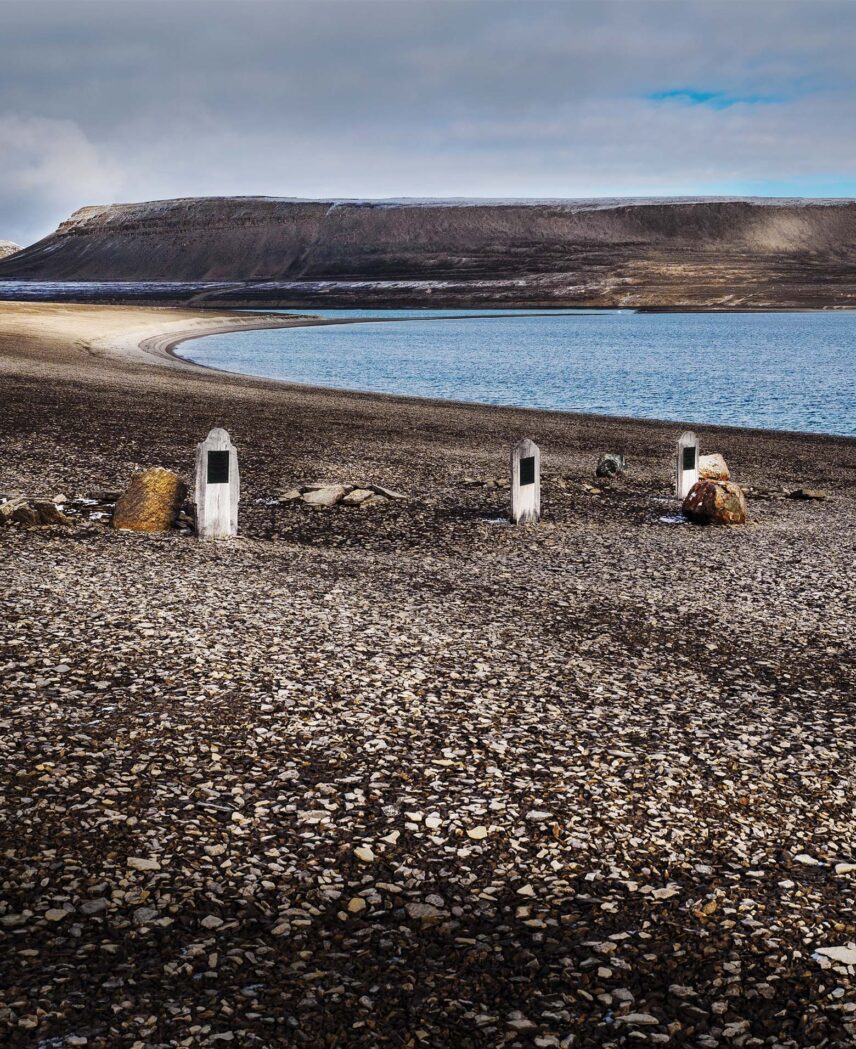
Photo Credit: Bert Jenkins
Explore the Open Air Museum
On this small ship expedition, navigate the length of Kangerlussuaq Fjord (Søndre Strømfjord), the longest fjord in the world, cross the invisible line of the Arctic Circle and sail the historic Northwest Passage. This signature itinerary visits the ghostly memorial of Franklin’s failed expedition on Beechey Island, Canada’s northernmost community (Ausuittuq), Ilulissat Icefjord (a dazzling UNESCO World Heritage Site) and Tallurutiup Imanga (Lancaster Sound) National Marine Conservation Area. On this trip, whale tails lead to tall tales!
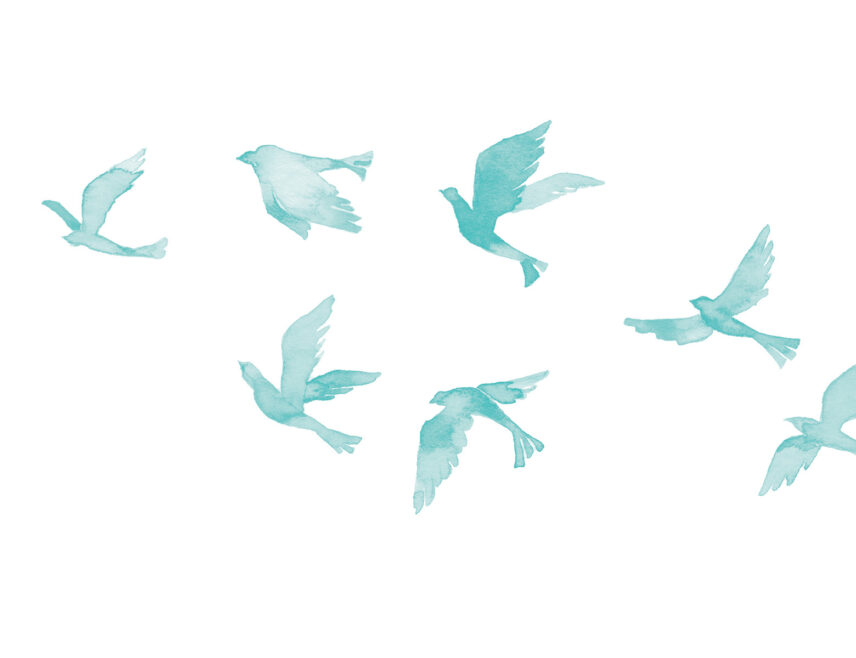
Itinerary
-
Day 1
Kugluktuk
Chills and Thrills
Feel the chills and thrills as your adventure begins at the wide mouth of the Coppermine River in Kugluktuk, the westernmost community in Nunavut. The “place of moving waters” shifted back to its original Inuinnaqtun name, Kugluktuk, in 1996.
Our northbound charter flight will land in Kugluktuk, where we transfer to the ship by Zodiac. Ultimately, Mother Nature holds the playbook and Iqaluktuuttiaq (Cambridge Bay), Nunavut, will be the alternate embarkation point based on sea, ice and weather conditions.
Included Meals
All on-board meals
Accommodations
Your cabin on the Ocean Endeavour
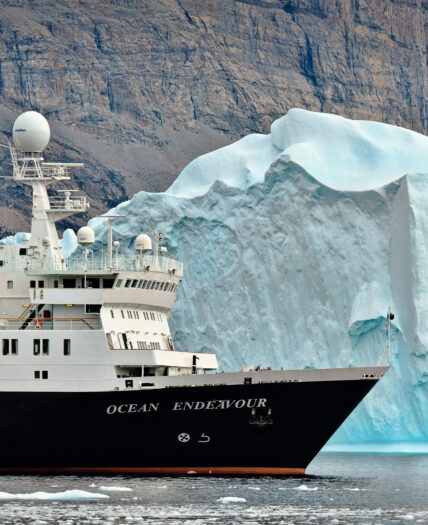
Photo Credit: Michelle Valberg
-
Days 2–5
Kitikmeot Region
The Ghost of Gjoa
The pinch-me part continues as we navigate the ice-strewn denim-blue waters of this historic waterway in search of wildlife. Nunavut’s least-populated region is abundant in species, both in the sea and on land.
We visit a local Inuit community where our hosts will share stories of their traditions and the area’s deep history.
The legacy of this integral waterway will become instantly palpable through explorers’ tales and learning about the vital role that Inuit knowledge played in the survival and success of those seeking the passage. Seafaring legend Roald Amundsen overwintered in the bay for two years while searching for the Northwest Passage. He successfully navigated it from 1903 to 1906 in his tiny ship, Gjoa.
Included Meals
All on-board meals
Accommodations
Your cabin on the Ocean Endeavour
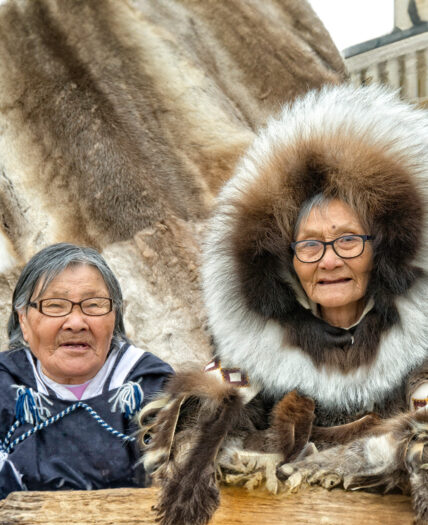
Photo Credit: Dennis Minty
-
Day 6
Bellot Strait
The Strait and Narrow
What’s the point? This is the most northerly point of continental North America! Bellot Strait is a narrow passage separating Somerset Island from the Boothia Peninsula. As we sail through this 1.2 mile-wide (2 km) waterway, we join an exclusive club—those who have seen the northernmost part of mainland North America!
As we take a deep dive into the region’s open history books we learn more about Joseph René Bellot, the namesake of the strait. In the 1850s, this steely French naval officer and Arctic explorer joined an expedition in search of Sir John Franklin’s HMS Erebus and aptly-named HMS Terror.
This area is full of surprises below the surface too—keep watch for beluga whales, narwhal and seal pop-ups!
Included Meals
All on-board meals
Accommodations
Your cabin on the Ocean Endeavour
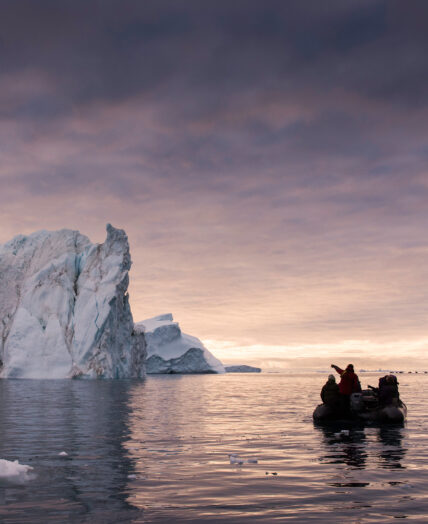
Photo Credit: Scott Forsyth
-
Day 7
Beechey Island
In Franklin’s Shadows
The ghostly Franklin Expedition Historical Site is a testament to the resilience of several ship crews (and later, search parties) who had winter encampments here, beginning with Franklin’s team in 1845–46. Three of his 130-person crew are buried here: John Torrington, William Braine and John Hartnell. They were exhumed (and reburied) in the 1980s as part of an anthropological examination, their bodies essentially mummified by the Arctic’s barometer.
Franklin’s crew wintered on the barren expanse of Beechey Island during their search for a Northwest Passage but became icebound off King William Island the following year. The death of these three men is still an unresolved Nancy Drew mystery. Was it really lead poisoning from their canned food diet? The rest of the crew resorted to cannibalism, so whose fate was worse? We visit the haunting memorial to the expedition that went sideways in a valiant attempt to make history.
Included Meals
All on-board meals
Accommodations
Your cabin on the Ocean Endeavour
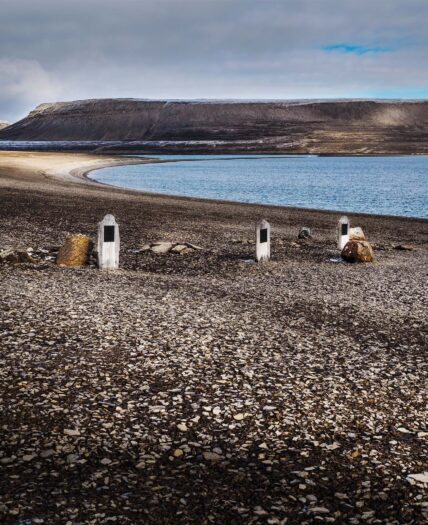
Photo Credit: Bert Jenkins
-
Days 8 & 9
Tallurutiup Imanga
The World’s Largest Uninhabited Island
Tallurutiup Imanga is one of the newest National Marine Conservation Areas in Nunavut. Narwhal, beluga and bowhead whales travel and feed along this protected marine highway. On our sub-zero safari we should also be on high alert for polar bears from the ship and onshore!
On the northern border of Tallurutiup Imanga, we explore the marvel of Devon Island—the largest uninhabited island on Earth. The startling landscape is a collision of flat-topped mountains, glacial valleys and a substantial ice cap. Talluruti translates to “a woman’s chin with tattoos on it,” and the place name is derived from the islands’ crevasses and streaks that (from a distance) resemble the traditional tattoos.
We also visit sacred archaeological sites, once home to Inuit and their irrepressible ancestors, as well as the remains of a Royal Canadian Mounted Police post and a Hudson’s Bay Company site.
Included Meals
All on-board meals
Accommodations
Your cabin on the Ocean Endeavour
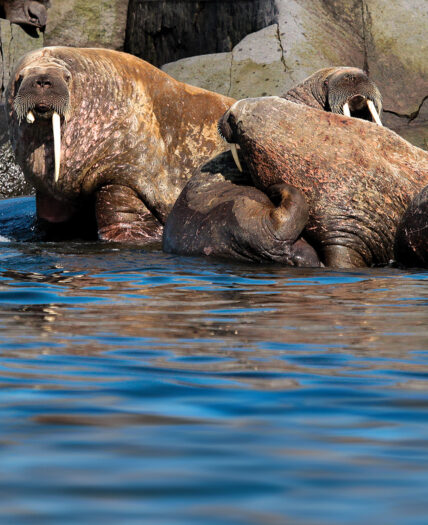
Photo Credit: Lee Naraway
-
Day 10
Ausuittuq
The Place That Never Thaws
The “place that never thaws” is a frozen expanse 715 miles (1,150 km) above the Arctic Circle. During the Cold War, Ausuittuq was Canada’s northernmost civilian community. In 1953, Inuit were relocated here by the Canadian government under false pretenses, with the hidden agenda of asserting Canadian sovereignty. The “Inuit Relocation Experiment” was an embarrassing failed attempt.
A striking, larger-than-life monument carved by Looty Pijamini was erected in 2010 with a commemorative plaque that reads: “They came to these desolate shores, to pursue the Government’s promise of a more prosperous life. They endured and overcame great hardship and dedicated their lives to Canada’s sovereignty in these lands and waters.”
We have the opportunity to meet community members and hear poignant stories about their lives and dreams.
Included Meals
All on-board meals
Accommodations
Your cabin on the Ocean Endeavour
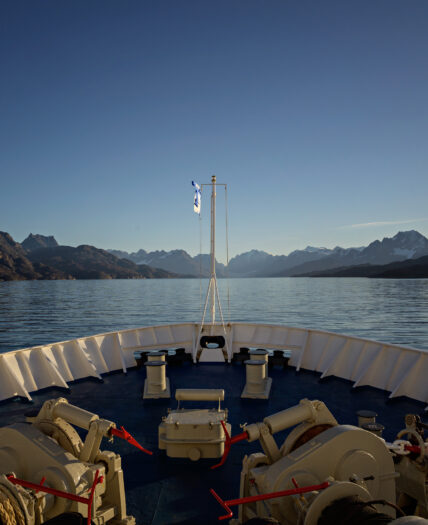
Photo Credit: Michelle Valberg
-
Day 11
Smith Sound
The Sound of Silence
Smith Sound, an ancient Inuit travel route, divides Ellesmere Island from Greenland and served as the main route for fearless explorers and adventurers searching for the North Pole. Polar explorers and U.S. Army officer Adolphus Greely, Royal Navy officer Sir George Nares and U.S. medical officer Elisha Kent Kane all navigated these waters with varying degrees of success (and scurvy, no doubt).
It was William Baffin who named the Sound after Sir Thomas Smythe in honor of his tireless promotion of voyages seeking a northwest passage. Earning a fortune from commerce, Smythe was eager to find more efficient trade routes to Asia.
Included Meals
All on-board meals
Accommodations
Your cabin on the Ocean Endeavour
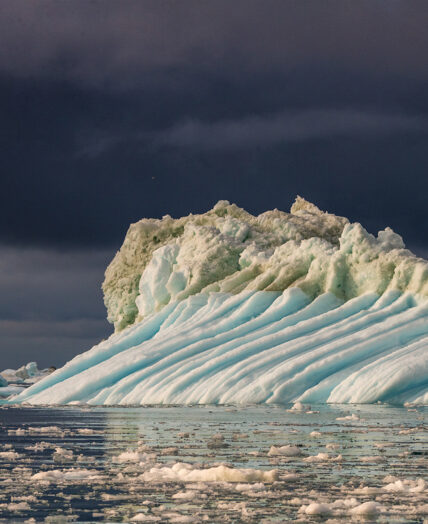
Photo Credit: Scott Forsyth
-
Day 12
At Sea
Chill Out
On this free-range day of exploration, take advantage of the unscheduled!
Chill out and sit in on an engaging workshop, watch a documentary or grab your binoculars and find your place on the deck. Our Expedition Team will be scanning for polar bears, walruses, whales, seals and seabirds. Minke, humpback whales as well as several species of seabirds are frequent fliers on this particular passage.
This small ship expedition provides the unique opportunity to learn more about the Inuit in their homeland as we traverse the very landscape they rely upon. Vibrant cultural performances, Inuit games and sharing traditional food make for an unforgettable experience.
Included Meals
All on-board meals
Accommodations
Your cabin on the Ocean Endeavour
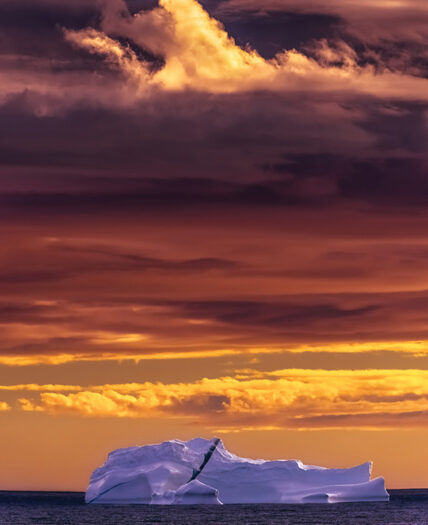
-
Days 13 & 14
Northwest Greenland
Just Add Ice
Today we explore the stunning fjords of the coast. Luminescent glaciers and icebergs abound here. In true expedition style, we seize every opportunity to hike, explore and spot wildlife. Also in expedition style, all of this will be dependent on the weather and sea conditions!
Whether you choose to set foot on land, casually cruise by Zodiac or situate yourself on the ship’s deck, we are in the esteemed company of Inuit cultural educators, expert geologists, naturalists and marine biologists eager to share their knowledge.
On foot, photographers and amateur botanists will appreciate the abundant flora and resilient plants that take root. Take a moment to absorb the precious silent serenity of this land.
Included Meals
All on-board meals
Accommodations
Your cabin on the Ocean Endeavour
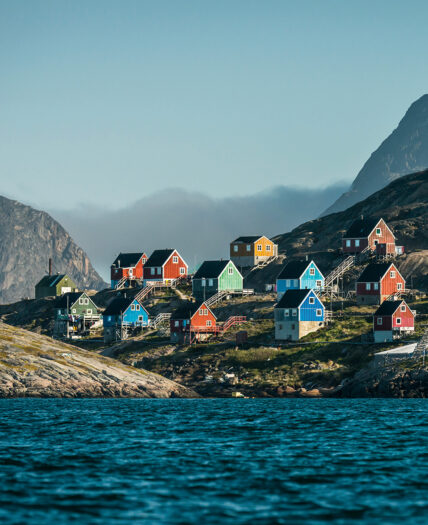
Photo Credit: Martin Lipman
-
Day 15
Ilulissat
A Floating Sculpture Park
Ilulissat literally translates to “iceberg” and it’s a no-brainer to see why. Located at the open mouth of the Ilulissat Icefjord (a designated UNESCO World Heritage Site), this waterway is the main artery of the Sermeq Kujalleq glacier and the source of countless icebergs in the North Atlantic.
The 34 mile-long (55 km) floating natural sculpture park is jammed with surreal icebergs. We will cruise in our fleet of Zodiacs and learn about growlers, bergy bits and calving.
A boardwalk that skirts the fishing harbor permits us to view the icebergs from shore. In town, you can choose your own adventure. Expect a howling soundtrack from the local motley crew of Greenland sled dogs. Museum nuts will want to check out the namesake Ilulissat Museum and its tribute to Danish explorer and hometown hero, Knud Rasmussen. Or head to the Ilulissat Icefjord Centre. There are several cafes and shops too.
Included Meals
All on-board meals
Accommodations
Your cabin on the Ocean Endeavour
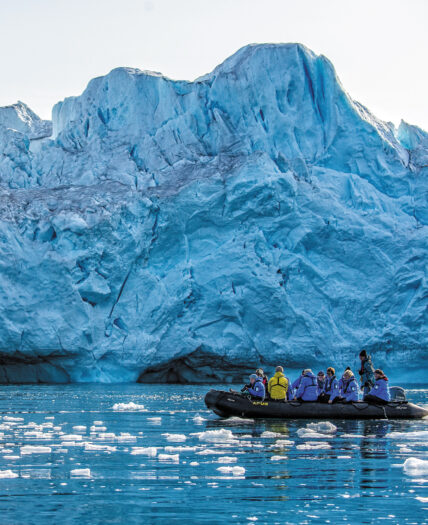
Photo Credit: Dennis Minty
-
Day 16
Sisimiut Coast
The Culture of the Circle
Sisimiut means “the people living in a place where there are fox dens.” How magical is that? For the first 2,000 years, the people of the Saqqaq culture occupied the area until Dorset culture was introduced 2,500 years ago. Dorset culture pulsed strong for 1,500 years and was followed by the Thule (ancestors of Canada’s modern-day Inuit population).
Sisimiut is the second largest city in Greenland (population: 5,600). This cool and contemporary Arctic Circle community has a city bus and skate park where lanky teens might be showing off their best ollies and BMX wheelies.
We’ll explore West Greenland’s complex coastal waterways of time-scraped glaciers, islands and fjords. The waters are relatively warm here due to the West Greenland Current and a subarctic location just 25 miles (40 km) north of the Arctic Circle. Today, we have the opportunity to hike and explore by Zodiac as well.
Included Meals
All on-board meals
Accommodations
Your cabin on the Ocean Endeavour
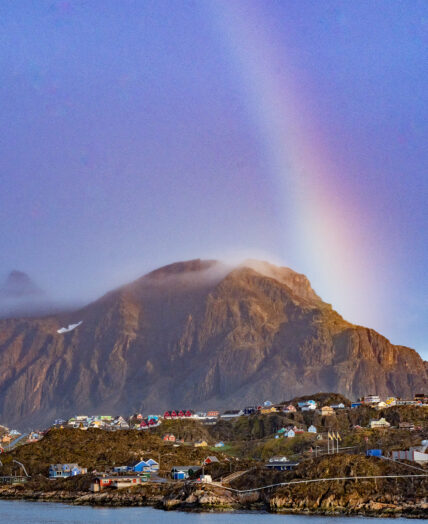
-
Day 17
Kangerlussuaq
Polar Bear Hugs
With 118 miles (190 km) of endless panoramic scenery to stare at, we travel down the longest fjord in the world, Kangerlussuaq Fjord (Søndre Strømfjord) and cross the invisible lines of the remarkable Arctic Circle on our way to Kangerlussuaq.
Kangerlussuaq, the town pocketed at the eastern head of Greenland, is a former U.S. Air Force base and the island’s primary flight hub. Here we disembark for our return charter flight to Toronto, Ontario. Zodiacs transfer us to waiting buses for the short trip through the land beyond the airbase—be on the lookout for muskox!
Forever knitted together by this transformative experience, it’s time for polar bear hugs goodbye. The Arctic landscape and the wonders held tightly within the Inuit culture, landscape and wildlife will remain in our hearts, minds and stories.
Included Meals
All on-board meals
Accommodations
Your cabin on the Ocean Endeavour
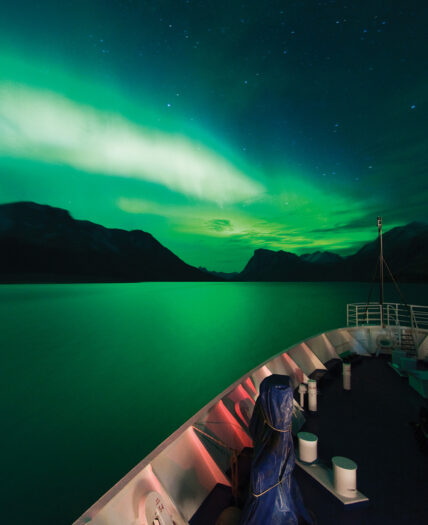
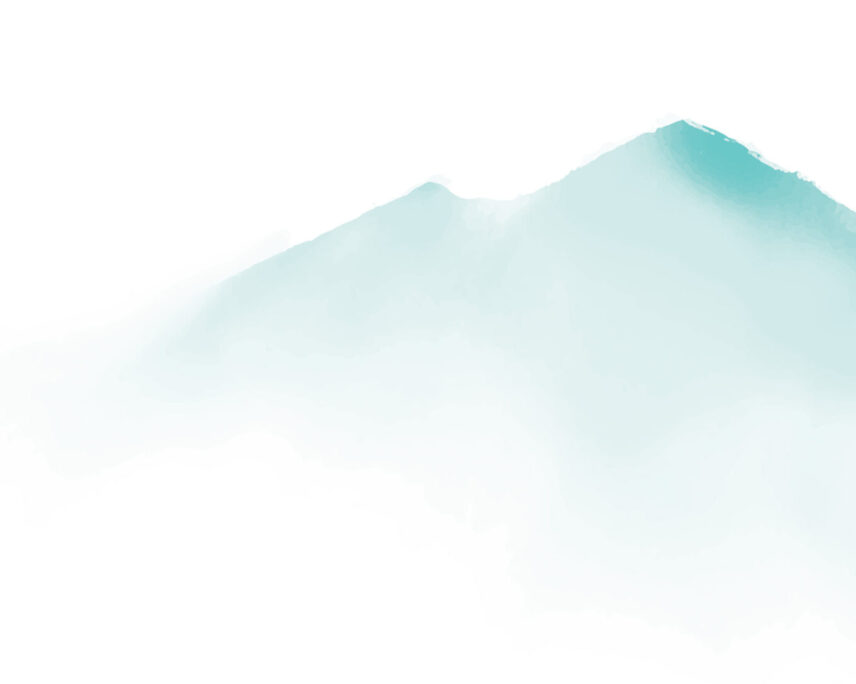
What’s Included
- Passage aboard the expedition ship Ocean Endeavour
- All onboard meals (even if you have seconds)
- Accommodation on the vessel (cabin categories 1–10 are subject to availability)
- A steely team of expert expedition staff
- Guided activities to stretch your legs and mind
- Sightseeing and community visits
- All Zodiac excursions
- Educational programming onboard, interactive workshops and evening entertainment
- Complimentary expedition jacket
- A handsome contribution to Adventure Canada’s Discovery Fund that supports local youth outreach, community support and habitat projects
- A Wild Women Expeditions Host
- Special access permits, entry and park fees
- Port fees, applicable taxes and the time of your life
What’s Excluded
- Northbound Charter Flight from Yellowknife, Northwest Territories (YZF) to Kugluktuk, Nunavut (YCO)
Additional fee for 2025: $1,000 USD - Southbound Charter Flight from Kangerlussuaq, Greenland (SFJ) to Toronto, Ontario (YYZ)
Additional fee for 2025: $1,450 USD - Gratuities
- Personal expenses
Please Note:
Upon booking, charter flight arrangements will be made for you by Wild Women Expeditions and added to your trip’s final balance.
All applicable taxes are included in the trip price.
25% Off Early Booking Bonus already reflected in trip price.
Adventure Canada itineraries may be subject to change without notice due to weather, ice and sea conditions. Please review our Booking Terms.
Trip Add-Ons
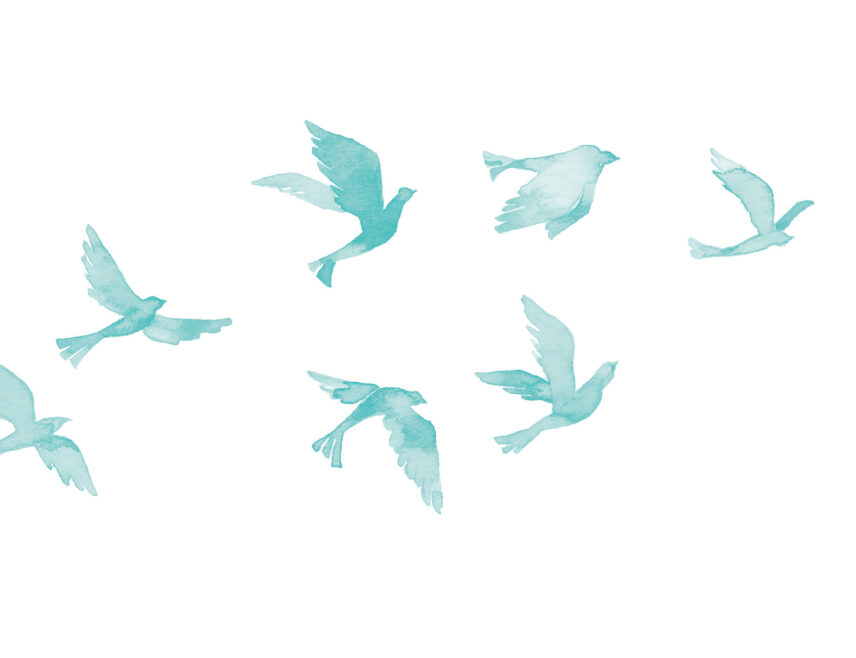
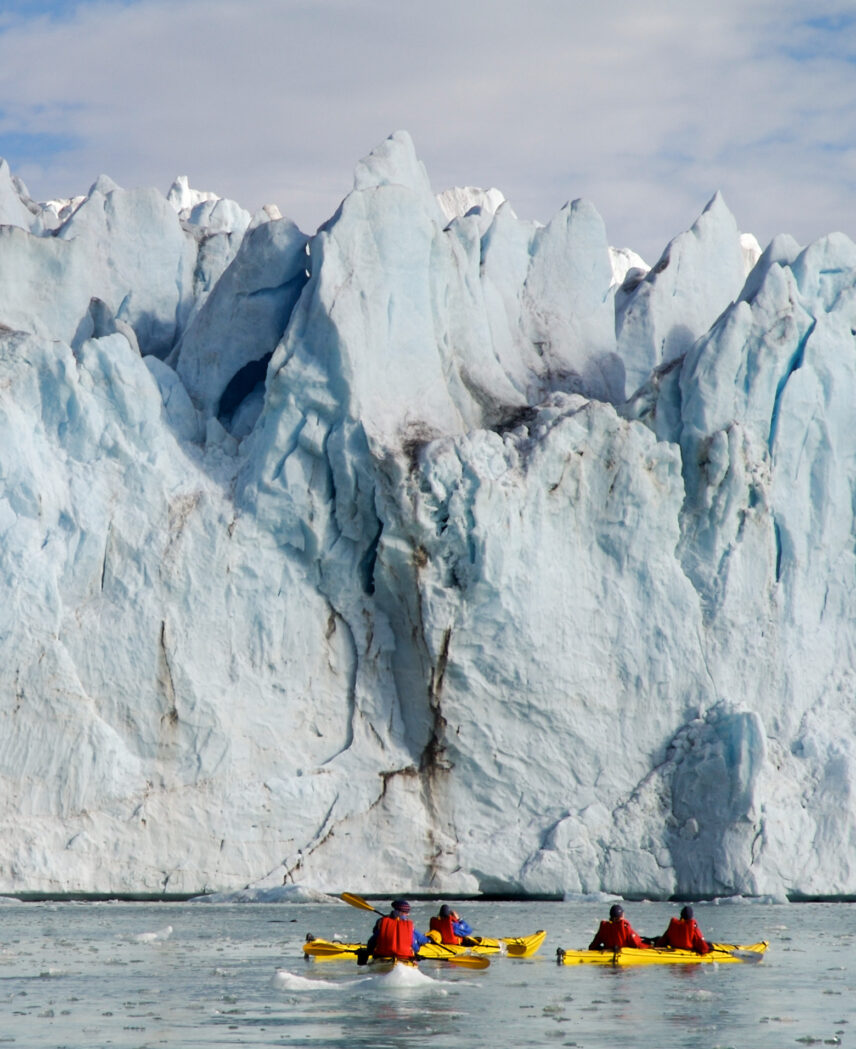
Kayaking
$800 USD Per Person
Join us for this rare opportunity to experience magical places by water. Our qajaq (Inuit for “kayak”) program will bring you through pristine waters, near marine life and along a historic coastline. Limited space is available per departure, and an application process is required for this activity. Some kayaking experience is required.
*Price based on 2025 departure date.

Bicycle Rentals
Explore the stunning Arctic landscape on two wheels. A fleet of Kona mountain bikes is available for rent during set times throughout each expedition. Cycling excursions are only available in predetermined community visits, and passengers will be notified when they are available one to two days in advance of the excursion during the daily recap.
*Prices may vary based on departure dates.
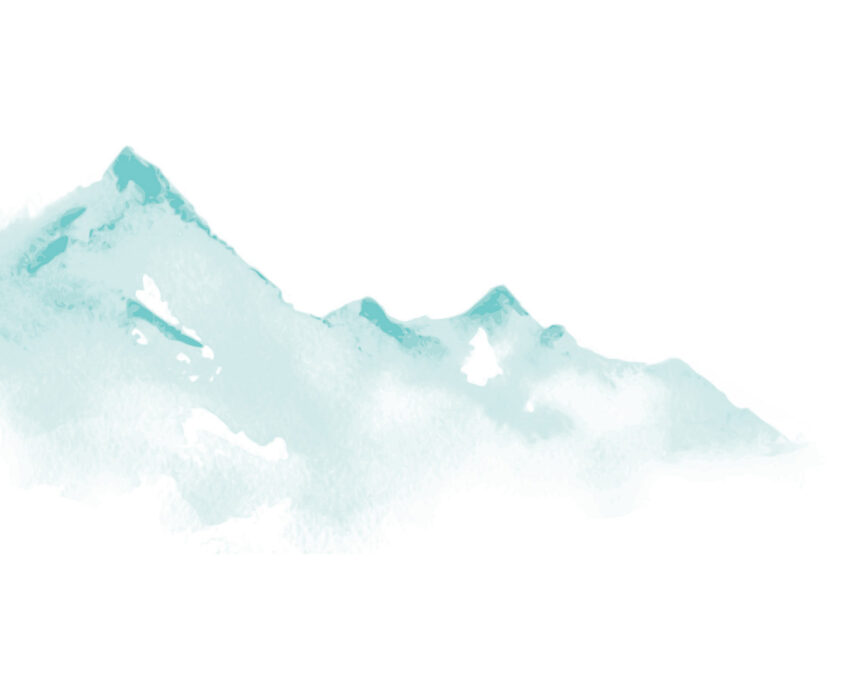
The Ship & Cabins
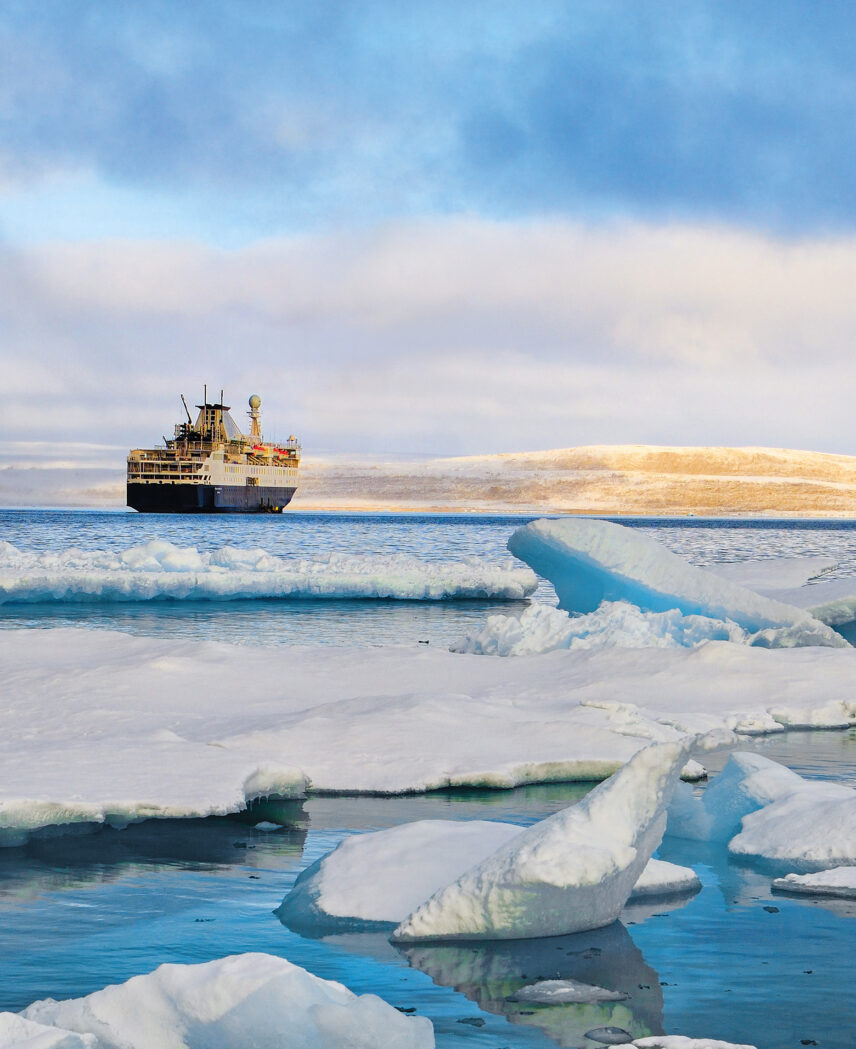
Photo: Bogner Bog
The Ocean Endeavour
The Ocean Endeavour is a 198-passenger ice-strengthened vessel with twenty Zodiacs, advanced navigation equipment and stabilizers. A doctor, paramedic and medical clinic offer complete peace of mind. The ship has several lounge areas, a library and multiple viewing decks, where you can relax by yourself or with your newfound crew.
Ship Specifications
Capacity: 198 passengers
Crew: 124
Registry: Bahamas
Ice Class: 1B
Length: 137 metres (450ft)
Breadth: 21 metres (19ft)
Draft: 5.8 metres (19ft)
Cruising Speed: 15 knots
Safety Features: 6 fully enclosed lifeboats and 8 life rafts. The ship has an ice-strengthened hull and the lifeboat and life raft capacity exceeds SOLAS requirements with at least 25% additional capacity above the number of people on board.
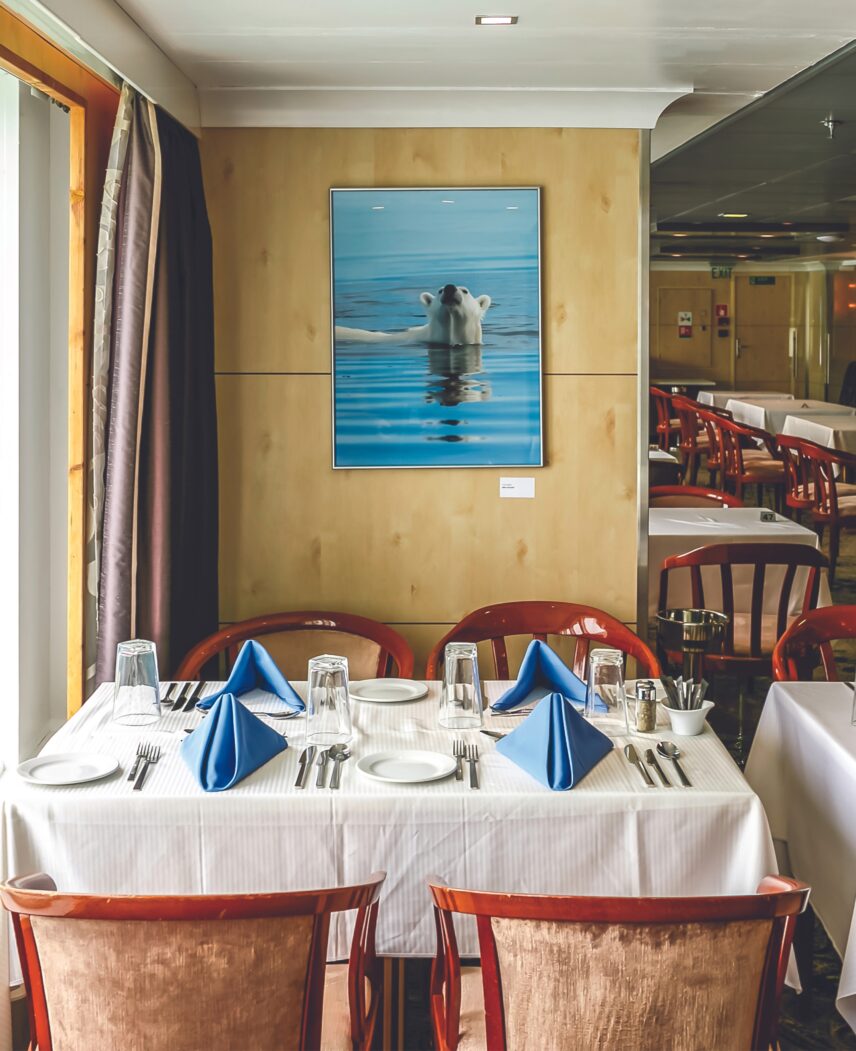
Food on Board
Enjoy open-seating meals in the roomy Polaris Restaurant, surrounded by ocean views. Adventure Canada staff mingle and share their expertise over meals. Breakfast and lunch include a wide variety of tasty and healthy choices. Globally inspired a la carte suppers offer options to suit every taste, including fish and vegetarian options. Desserts, made fresh daily, are a highlight! Food sensitivities, special diets, and personal choices can be accommodated with advance notice. Early-bird breakfast, afternoon tea, late-night snacks, and treats round out the offerings. And tea, coffee, and cookies are always available!
Life on Board
Life aboard Ocean Endeavour is as relaxed or as engaged as you want it to be. The onboard spa, library, hot tub, sauna, gift shop, multiple lounges, and viewing areas offer comfort and ease. Our programming is designed to enhance your understanding and appreciation of the regions we visit. Presentations, workshops, entertainment, and special events complete the excursions. From dances to polar plunges, from lounge concerts to theme parties, we love to have a great time together!
Choose Your Cabin
Below are details about the cabin options available. All cabins are shared with one of your new Wild Women friends. However, the earlier you book, the more likely you are to be paired with your travel companion.
Cabin Category 7
Select Twin
- Picture windows, unobstructed view
- Two lower berths
- Private bath
- Hair dryer, bathrobe, towels, body wash, and hair care products
- Intercom, telephone, and flat screen TV
- Approximately 190 square feet
Cabin Category 6
Comfort Twin
- Two porthole windows, unobstructed view
- Two lower berths
- Private bath
- Hair dryer, bathrobe, towels, body wash, and hair care products
- Intercom, telephone, and flat screen TV
- Approximately 175 square feet
Cabin Category 5
Main Twin
- Picture windows, unobstructed view
- Two lower berths
- Private bath
- Hair dryer, bathrobe, towels, body wash, and hair care products
- Intercom, telephone, and flat screen TV
- Approximately 115 square feet
Cabin Category 4
Exterior Twin
- Porthole window, unobstructed view
- Two lower berths
- Private bath
- Hair dryer, bathrobe, towels, body wash, and hair care products
- Intercom, telephone, and flat screen TV
- Approximately 100 square feet
Cabin Category 3
Interior Twin
- Interior cabin
- Two lower berths
- Private bath
- Hair dryer, bathrobe, towels, body wash, and hair care products
- Intercom, telephone, and flat screen TV
- Approximately 120 square feet
Cabin Category 2
Triple
- Interior cabin
- Three lower berths
- Two private baths
- Hair dryer, bathrobe, towels, body wash, and hair care products
- Intercom, telephone, and flat screen TV
- Approximately 200 square feet
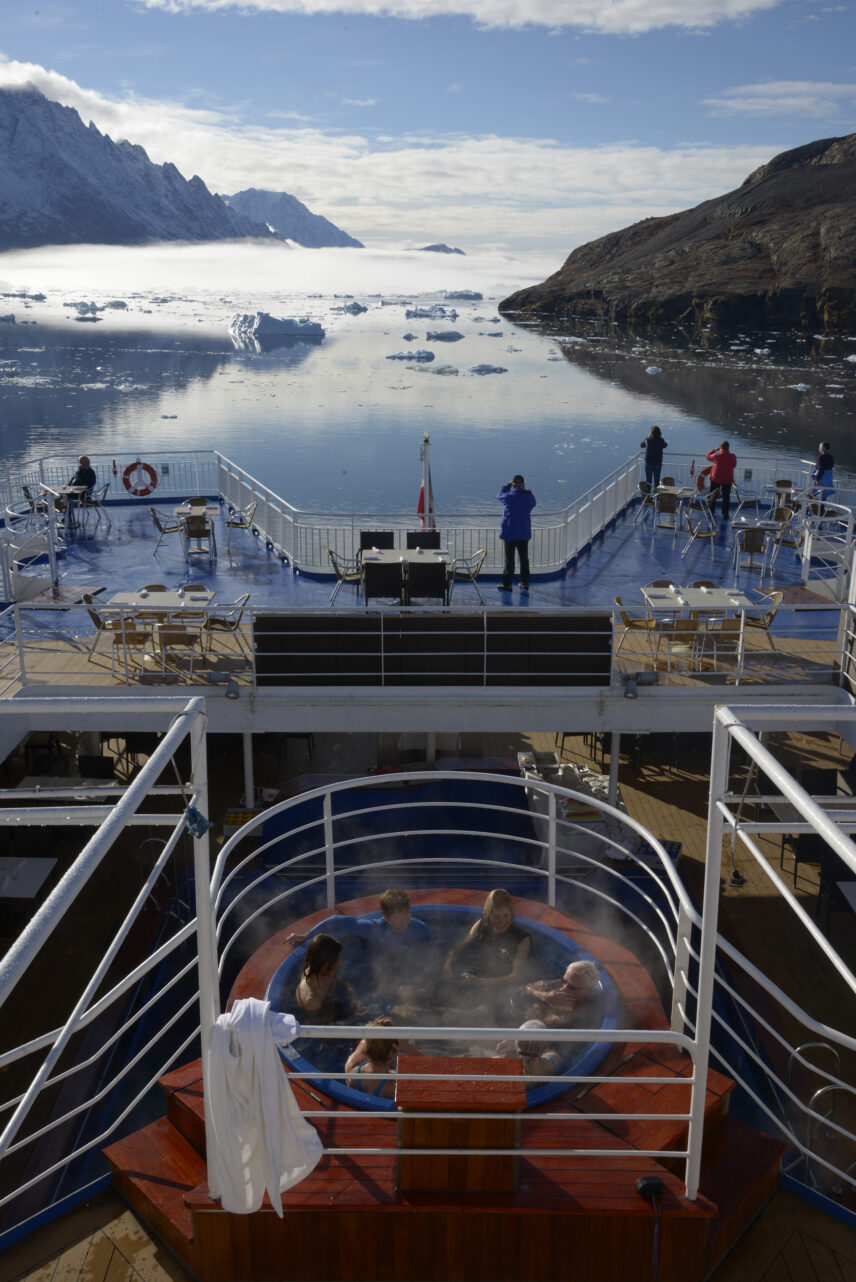
Hot Tub
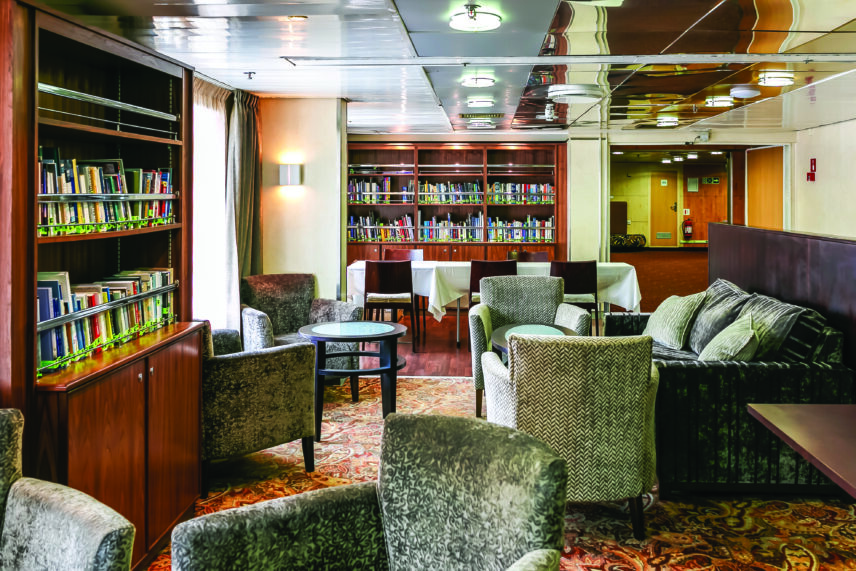
Compass Club – Library
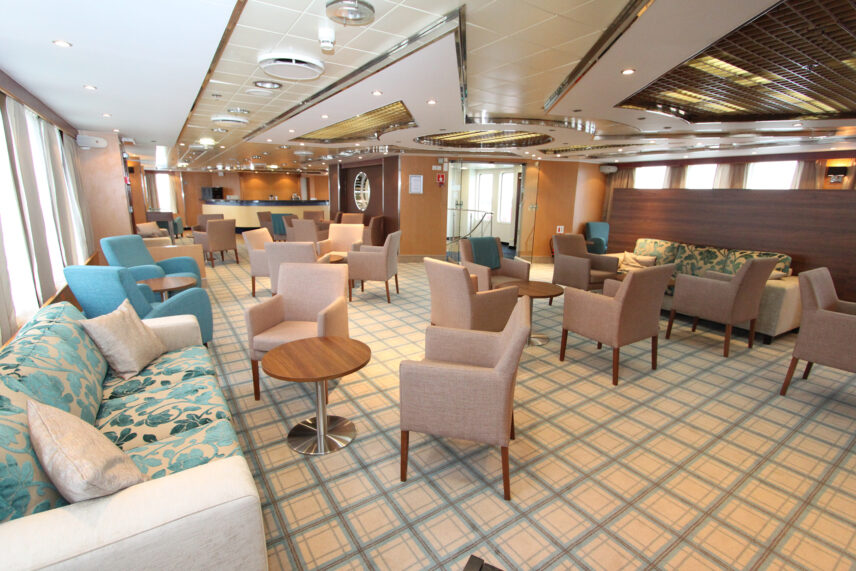
Meridian Club
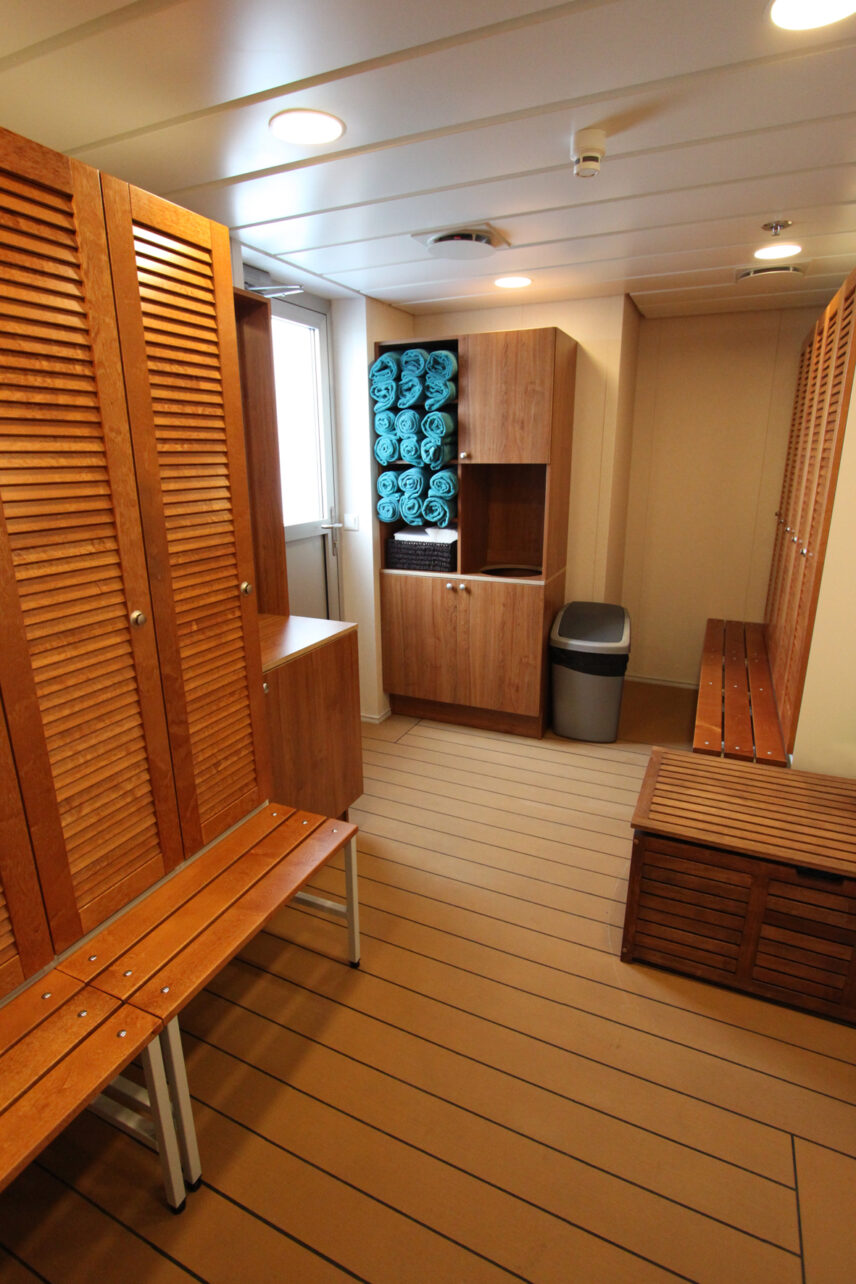
Sauna
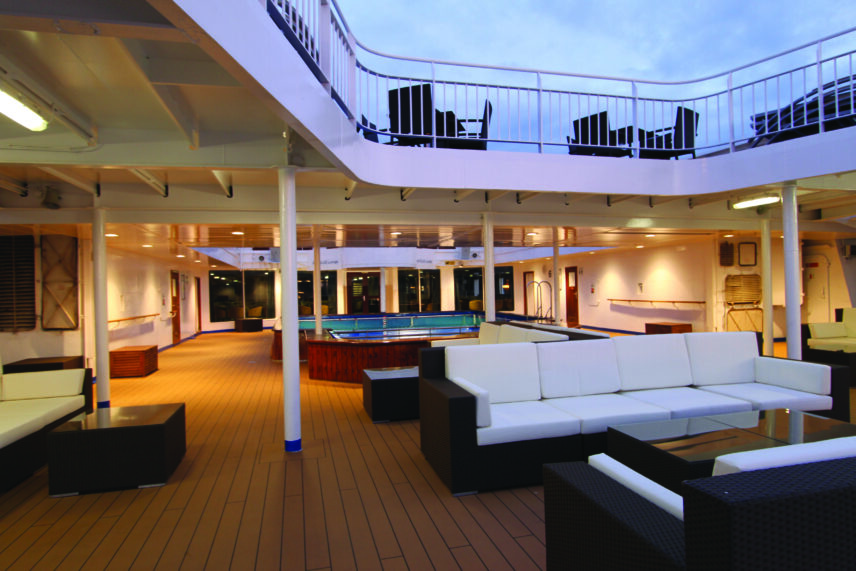
Pool Deck – Stern
Cabin Upgrades
While we have reserved the cabin options above, you may have the option to book a different cabin for an additional cost, subject to availability.
Cabin Category 10
Suite
- Forward-facing picture windows, unobstructed view
- Matrimonial bed (bigger than US double but smaller than a Queen)
- Private bath with full tub
- Refrigerator
- Hair dryer, bathrobe, towels, body wash, and hair care products
- Intercom, telephone, and flat screen TV
- Approximately 310 square feet
Cabin Category 9
Junior Suite
- Picture windows, unobstructed view
- Matrimonial bed (bigger than US double but smaller than a Queen)
- Private bath
- Sitting area
- Hair dryer, bathrobe, towels, body wash, and hair care products
- Intercom, telephone, and flat screen TV
- Approximately 270 square feet
Cabin Category 8
Superior Twin
- Two picture windows, unobstructed view
- Two lower berths
- Private bath
- Sitting area
- Hair dryer, bathrobe, towels, body wash, and hair care products
- Intercom, telephone, and flat screen TV
- Approximately 210 square feet
Cabin Category 1
Quad
- Interior cabin
- Four lower berths
- Private bath
- Hair dryer, bathrobe, towels, body wash, and hair care products
- Intercom, telephone, and flat screen TV
- Approximately 240 square feet
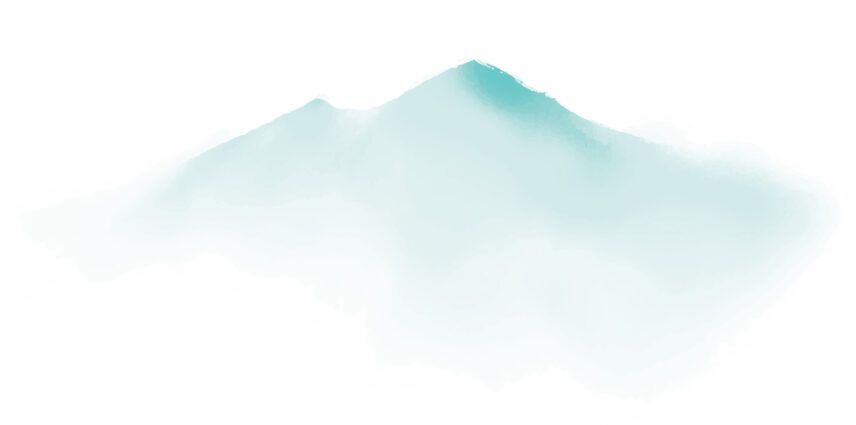
Trip Details
The Ocean Endeavour
While you’ll be with the Wild Women group, this isn’t an exclusive Wild Women Expeditions or 100% women-only trip. The Wild Women group size can range from 10 to 40 women, but there will be other passengers along for the journey. In addition, the staff and crew of the Ocean Endeavour, a 198-passenger ship, will also be co-ed.
Our Expedition Cruise Partner’s Client Portal
Approximately three to four months prior to departure, you will receive an email with a unique URL link to our partner’s information portal. Please carefully and thoroughly complete these forms with your current personal and medical information, dietary preferences or requirements and other information as requested.
Arrival and Departure
This expedition starts in Yellowknife, Northwest Territories (airport code: YZF), and finishes in Toronto, Ontario (YYZ).
The Wild Women Way
If you’re wondering how we roll, it’s together. The Wild Women Way is our modus operandi, our mantra and our rock solid foundation. You can learn more about our Wild Ways HERE.

How We Support You
Ready for a big adventure? On this trip we brave the elements, hike uneven coastal terrain and have several Zodiac transfers (from the ship to Zodiac and from Zodiac to shore). Yes, it can be a challenge, but you’re never alone. Like thousands of women before you, you’ll draw on the strength you didn’t know you had and tap into your inner explorer.
Like all our trips, this trip can be scaled to suit different abilities and comfort levels. Still have concerns? Let’s talk about it.
What the Trip Entails
- Entering and exiting the Zodiacs
- Maneuvering around tight spaces
- Walking on uneven terrain
- Being on a boat for an extended period of time
- Due to strong currents, there may be moderate movement on the vessel while navigating (most passengers are not affected)
- If you choose to go on the kayaking excursions, some kayaking experience is required
- The Wild Women group size can range from 10 to 40 women, but there will be other passengers along for the journey. In addition, the staff and crew of the Ocean Endeavour, a 198-passenger ship, will also be co-ed
- Physical Rating: Easy (Some physical activity included. Trips are the most leisurely with an average of 1-4 hours of physical activity each day.)


